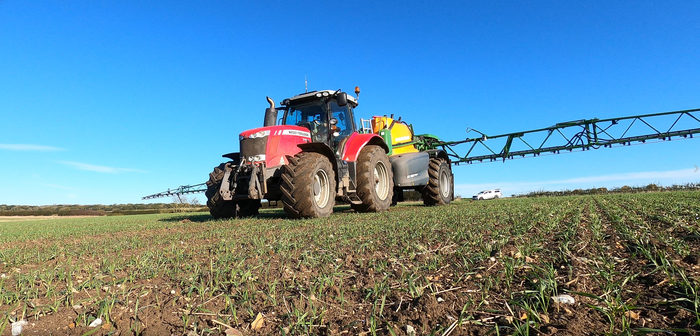AICC agronomist Patrick Stephenson is anticipating a busy autumn for sprayers, if the weather holds.
He doesn’t expect many farmers to delay drilling this season, especially in northern counties. “Prioritise drilling areas with a lower burden first, and the worst areas last. It might only be seven days difference but one week means 10-15% less black-grass germinating in the crop according to NIAB information.”
“Apply the pre-em within two to three days after drilling for best efficacy, we have got new chemistry like aclonifen and cinmethylin as well as several other actives that work well. You can expect 80–85% control from a successful autumn programme, which is pretty good but not enough to rely on without the cultural measures.”
Patrick stresses that applying at the true pre-em timing is the best guarantee of efficacy. Focusing on drilling a large area can mean the pre-em gets delayed affecting performance. Nevertheless, he expects a second spray will be the norm this autumn.
“I err towards keeping the two sprays as tight as you can, ten days to two weeks. Delaying too long can reduce efficacy, the best control must cover October and early November when most blackgrass germinates.”
Bayer’s Darren Adkins agrees drilling earlier places more reliance on herbicides to solve weed problems in wheat.
48 hour window
“The pre-em timing, ideally within 48 hours of drilling is still the most important. You need good immediate control and something that will last because any follow up might be delayed or even not go on at all. Bayer’s standard is Proclus (aclonifen) plus Liberator (flufenacet + diflufenican).”
He notes aclonifen and diflufenican both have good longevity so farmers can expect weed control for several weeks (up to 2 months in the case of aclonifen). Flufenacet is shorter lived and more mobile in the soil with strong activity against embryonic roots. According to Mr Adkins, the first spray needs to have this combination of activity to cover all bases.
“Something to watch out for is that flufenacet needs soil moisture to perform, for September drilled crops, soil could be too dry to for optimum performance.”
“Gone are the days of a cheap and simple ‘top-up’, there is a more even split of activity between the two applications. This is especially important in earlier drilled crops, which could see significant extended weed germination.”
Mr Adkins notes that herbicides degrade more quickly in warmer conditions so early drilled crops need the second spray to extend longevity. He thinks that adding different actives is a must for resistance management and it helps widen the broad-leaf weed spectrum. Pendimethalin is good option for longevity while metribuzin products or cinmethylin provide good immediate weed control.
Factor in crop safety to all applications, ensure seed is drilled to a consistent depth of at least 32mm and avoid applications before heavy rain. It can wash herbicides to depth affecting the developing roots of the crops, lighter soils in particular need care.




